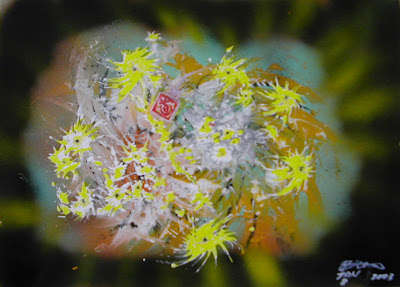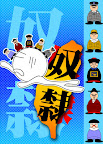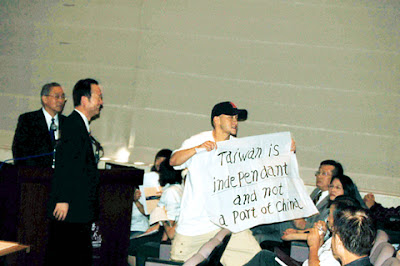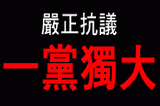By Leo
In 1947, as the first cohort of KMT troops entered Formosa and began their looting and banditry, a group of Taiwanese elites and intelligentsias rose to resist the party’s ruthless and authoritarian way of governing Taiwan. Unfortunately, many of these elites sacrificed their lives in the resistance. Many were put to death around the February 28th of 1947. Since then, the day, February 28th took on a special meaning in the history of Taiwan and, most importantly, the island’s national identity.
While many East Asian scholars from around the world call this event as the February 28th Incident; we, at Tati Cultural and Educational Foundation - and speaking on the behalf of our beautiful country, Taiwan - would like to name this honorable event as the February 28th Massacre. We like to highlight the fact that our Predecessors, the Taiwanese elites, were not just sacrificed. They gave up their most precious possession - their lives - for the most noble of all causes in humanity. That is, they fought for freedom.
...繼續閱讀
顯示摘要...
In the process of their endeavors for a free and independent Republic of Taiwan, our Predecessors achieved divine status, both figuratively and literally. Please look around you. And look into Taiwan’s growing international reputations and economic prosperities during the past three decades. All marvelous miracles! Our freedom-fighting Predecessors’ celestial blessings had been, and will always be, with us. Hence, we shall call our great Predecessors the Taiwanese Martyred Spirits (台灣忠烈英靈), both to celebrate their fight for our freedom and their attainment of the fruits of Bodhisattvas.
The word “Bodhisattva” is defined as “a person who has attained prajna, or Enlightenment, but who postpones Nirvana in order to help others to attain Enlightenment.” Apparently, such action takes tremendous sacrifice, moral courage, and compassion. By peacefully fighting for freedom, the Taiwanese Martyred Spirits’ lives resemble those of Bodhisattvas’.
Chanting the Open Hearts Mantra (明心咒) serves two purposes: (1) It provides a channel that links our soul to the Heaven and our Lord, the Creator of Our Universe. (2) The Mantra is also a channel for us to spiritually commune with Taiwanese Martyred Spirits. We invite all of you from around the world, regardless of your race, ethnicities, national origin, gender, and faiths to chant the Open Hearts Mantra; and to pray for a free and peaceful world. Someday, the entire world, not just Taiwan, will enjoy freedom, peace, and prosperity. May all of you be blessed by the Taiwanese Martyred Spirits. May all of us attain Enlightenment. So let us pray for a better world and humanity, with the Open Hearts Mantra:
Um Um Hong Hong Tsum
Duo La Ba Ni Hum
Mantra Chanting Guidelines
Chanting of the Open Hearts Mantra is quite liberal. One can chant the Mantra out loud or silently literally anywhere. We do, however, recommend that you, gentle readers, only chant the Mantra out loud in clean and chaste places – out of respect for Taiwanese Martyred Spirits and the Lord, Our Creator. “Clean and chaste places” include anywhere except bathroom and nuptial bedroom.
Correct pronunciations of the Mantra, both when chanting out loud or silently, are absolutely critical. Please keep in mind that chanting this Mantra is to spiritually commune with Taiwanese Martyred Spirits. It also provides a linkage for our soul with Heaven. In short, the Mantra connects us spiritually to the celestial world. Therefore, it is highly important that pronunciations be accurate.
The Mantra is of ten-syllable in length but consists of only eight different syllables, with two of the ten syllables each being repeated once. The following are sequential pronunciation keys starting from the Mantra’s first syllable:
(1) Um – IPA pronunciation key is /ʌm/ as in the “om” of “come.” This syllable is subsequently repeated once.
(2) Hong – IPA pronunciation key is /hɔŋ/ as in the “h” of “home” combined with “ong” of “strong.” This syllable is subsequently repeated once.
(3) Tsum – IPA pronunciation key is /tsʌm/ as in combining the “t” and “s” of “that’s,” then join the “ts” sound with “Um” syllable.
(4) Duo – IPA pronunciation key is /dʊɔ/. Combine the two vowels: the “u” of “put” and “a” of “all.” Then join these two “short” vowel sounds with the consonant “d” of “do.”
(5) La – IPA pronunciation key is /lɒ/ as in “lo” of “lot.”
(6) Ba –IPA pronunciation key is /bɒ/. Same pronunciation as the “La” syllable above but substitute the consonant “l” with “b.”
(7) Ni - IPA pronunciation key is /nɪ/ as in “ni” of “niche.”
(8) Hum - IPA pronunciation key is /hʌm / as in “hum” of “humming.”
Music oriented? Listen to the Mantra with melody in this mp3 file here.
For your references, a copy of IPA (International Phonetic Alphabet) pronunciation keys table can be found at this link: http://dictionary.reference.com/help/luna/IPA_pron_key.html.
位於 8/11/2008 06:13:00 下午 0 意見
標籤: Leo專欄
2008年8月14日 星期四
Introduction to the Open Hearts Mantra(明心咒介紹)
Subscribe to:
張貼留言 (Atom)













0 Comments:
Post a Comment